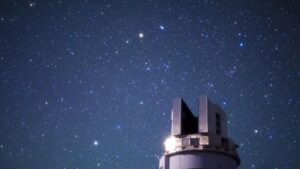GS3 – Science & Technology

Context :
New research using the Hyper Suprime-Cam (HSC) on the Subaru Telescope (Hawaii) has offered insights into the distribution of matter in the universe. The researchers arrived at a Sigma 8 (S8) value of 0.747, which is consistent with earlier astronomical surveys.
What is Sigma 8 (S8)?
- S8 (Sigma 8) is a key cosmological parameter that helps scientists measure how matter is distributed or “clumped” in the universe.
- This matter includes baryonic particles like protons and neutrons, which form stars, galaxies, and cosmic structures.
How It’s Measured:
- The universe is divided into regions around 26 million light-years across.
- Astronomers count galaxies and cosmic structures (like galaxy clusters and filaments) in these zones.
- This helps estimate density variations and the overall clumpiness of matter in space.
What the S8 Value Tells Us:
- Higher S8 → More clustering of matter (greater density contrasts).
- Lower S8 → Matter is more evenly spread across the universe.
The recent finding of S8 = 0.747 supports existing data, enhancing the reliability of current cosmological models.
Relation to ΛCDM Model:
- The Lambda Cold Dark Matter (ΛCDM) model is the standard cosmological model.
- It attributes the universe’s structure and expansion to two dominant forces:
- Dark Matter: Drives gravitational attraction and clustering.
- Dark Energy (Lambda): Drives the universe’s accelerated expansion.
- S8 plays a key role in testing and refining this model by comparing observed clumpiness to theoretical predictions.




